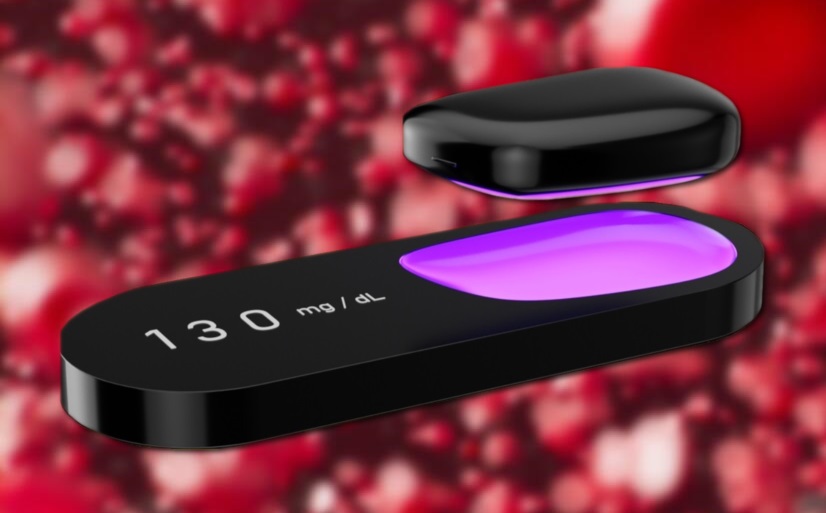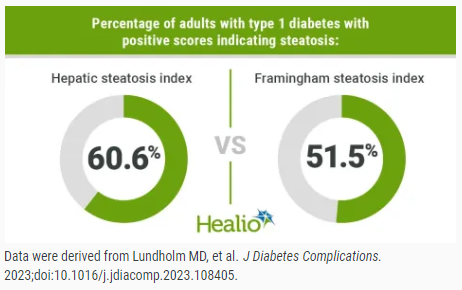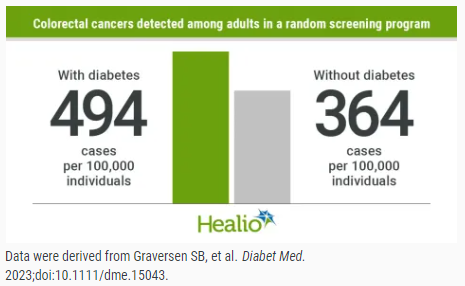Know Labs establishes scientific advisory board to advance non-invasive glucose monitoring by Sean Whooley for DrugDeliveryBusiness.com, 22 March 2023.
 Know Labs announced that it established a scientific advisory board to accelerate the development of its glucose monitoring devices. Seattle-based Know Labs expects the members to advise on algorithm refinement, device development, clinical trial design, and research publication strategy. They’ll work alongside the company’s current medical and regulatory advisory board members.
Know Labs announced that it established a scientific advisory board to accelerate the development of its glucose monitoring devices. Seattle-based Know Labs expects the members to advise on algorithm refinement, device development, clinical trial design, and research publication strategy. They’ll work alongside the company’s current medical and regulatory advisory board members.
Know Labs develops its proprietary Bio-RFID technology. It uses spectroscopy to direct electromagnetic energy through a substance or material to capture a unique molecular signature. This technology integrates into wearable, mobile, or bench-top form factors. Know Labs developed the first application of Bio-RFID as a non-invasive glucose monitor.
“We’re fortunate to be partnering with a team of respected scientific and technical advisors whose areas of expertise are directly related to the work we have underway,” said Ron Erickson, CEO and chair at Know Labs. “Their insights will help us build upon the knowledge and skills of our own team and our strategic partners to further best practices that meet the highest possible standards and to propel us toward clear, unequivocal scientific and public validation of our technology in 2023.”
Read more: Know Labs establishes scientific advisory board to advance non-invasive glucose monitoring
HAGAR Announces Preliminary Results of Study For Its Non-Invasive Glucose Monitoring System reported by BusinessWire.com, 22 March 2023.
 HAGAR, the developer of GWave, a revolutionary non-invasive continuous glucose monitoring technology that uses RF waves to measure glucose levels in the blood, announced promising preliminary data from its clinical study with Professor Ami Navon from the Weizmann Institute of Science for its non-invasive glucose monitoring device, GWave. (Please notice that I could find absolutely NO images of the GWave device!)
HAGAR, the developer of GWave, a revolutionary non-invasive continuous glucose monitoring technology that uses RF waves to measure glucose levels in the blood, announced promising preliminary data from its clinical study with Professor Ami Navon from the Weizmann Institute of Science for its non-invasive glucose monitoring device, GWave. (Please notice that I could find absolutely NO images of the GWave device!)
In contrast to invasive continuous glucose monitors currently available in the market, GWave measures blood glucose as opposed to the interstitial fluid which creates a greater lag time. The accuracy gained by measuring the blood glucose provides both pre-diabetic and diabetic individuals the opportunity to monitor their glucose levels non-invasively, whilst working towards prevention and reduction in the overall risk. In addition to its accuracy, the GWave device is a third of the size of a smartphone and contains significantly less radio frequency exposure than the average smartphone.
“Almost 80% of the 463 million adults living with diabetes globally come from low and middle-income countries. This makes the development of a device like GWave even more significant as it enables testing and glucose monitoring to be accessible to more people than ever before,” said Dr. Irl Hirsch (endocrinologist and T1D, who recently was awarded the President’s Innovation Award at ATTD).
Read more: HAGAR Announces Preliminary Results of Study For Its Non Invasive Glucose Monitoring System
Newsom announces $50-million contract to make California’s own brand of insulin by Taryn Luna & Emily Alpert Reyes for LATimes.com. 18 March 2023.
 Gov. Gavin Newsom announced a new $50-million contract with the nonprofit generic drugmaker Civica to produce insulin under the state’s own label. Newsom originally declared his intent to produce generic drugs three years ago in an attempt to lower the cost of pharmaceutical products for Californians who struggle to afford often life-saving medication. Pending approval by the U.S. Food and Drug Administration, the deal with Civica would provide the first pharmaceutical product made under the CalRX brand of generic drugs.
Gov. Gavin Newsom announced a new $50-million contract with the nonprofit generic drugmaker Civica to produce insulin under the state’s own label. Newsom originally declared his intent to produce generic drugs three years ago in an attempt to lower the cost of pharmaceutical products for Californians who struggle to afford often life-saving medication. Pending approval by the U.S. Food and Drug Administration, the deal with Civica would provide the first pharmaceutical product made under the CalRX brand of generic drugs.
Under the deal, a 10-milliliter vial — normally costing $300 — would be made available for the same $30 it costs the state to manufacture and distribute the drug, according to the governor’s office. Newsom’s office said that as a result of such sharply reduced prices, patients who pay out of pocket for insulin would save between $2,000 and $4,000 annually.
“This is a big deal, folks,” Newsom said. “This is not happening anywhere else in the United States.”
Read more: Newsom announces $50-million contract to make California’s own brand of insulin
Steatosis present in most adults with type 1 diabetes and overweight or obesity by Michael Monostra for Healio.com/endocrinology, 23 march 2023.
 Hepatic steatosis may be present in most adults with type 1 diabetes, especially those with overweight or obesity, according to a study published in the Journal of Diabetes and Its Complications.
Hepatic steatosis may be present in most adults with type 1 diabetes, especially those with overweight or obesity, according to a study published in the Journal of Diabetes and Its Complications.
“Most patients with type 1 diabetes have nonalcoholic fatty liver disease (NAFLD) steatosis by liver scores, yet very few have had any investigation for this condition,” Michelle D. Lundholm, MD, a clinical endocrinology fellow said. “It is alarming how under-investigated and underdiagnosed NAFLD is in the population with type 1 diabetes. We are missing opportunities to detect early NAFLD disease and apply cardiometabolic interventions to prevent irreversible liver damage.”
Key takeaway: Liver disease screening should be integrated into routine diabetes care. ASK YOUR DOCTOR ON YOUR NEXT VISIT FOR YOUR DIABETES MANAGEMENT!
Read more: Steatosis present in most adults with type 1 diabetes and overweight or obesity
More physicians want to leave their jobs as pay rates fall by Hailey Mensik for HealthCareDive.com, 23 March 2023.
 Physicians are reporting high levels of burnout and sentiments about leaving their jobs since the pandemic began. Many physicians are now open to accepting lower pay in exchange for more autonomy and work-life balance, with some 71% of physicians in another 3,000-respondent survey saying they have accepted jobs with lower pay or would be willing to.
Physicians are reporting high levels of burnout and sentiments about leaving their jobs since the pandemic began. Many physicians are now open to accepting lower pay in exchange for more autonomy and work-life balance, with some 71% of physicians in another 3,000-respondent survey saying they have accepted jobs with lower pay or would be willing to.
In brief:
-
- Two out of three physicians are considering an employment change.
- About 36% of respondents said they were considering early retirement due to overwork, with women physicians more likely than men to report that they were overworked and considering an employment change.
- Compensation was stagnant or down across many specialties in 2022, after rising across all specialties the prior year.
Read more: More physicians want to leave their jobs as pay rates fall
Screening program detects more colorectal cancers in adults with diabetes by Michael Monostra for Healio.com/endocrinology, 22 March 2023.
 A colorectal cancer screening program in Denmark that used fecal immunochemical testing detected more cases among adults with diabetes and more cases at stage I of the disease than among those without diabetes, according to data published in Diabetic Medicine.
A colorectal cancer screening program in Denmark that used fecal immunochemical testing detected more cases among adults with diabetes and more cases at stage I of the disease than among those without diabetes, according to data published in Diabetic Medicine.
“Diabetes is associated with a 20% higher risk of developing colorectal cancer,” said Tinne Laurberg, MD, PhD, a pathologist at Steno Diabetes Center Aarhus at Aarhus University Hospital in Denmark. “Fecal immunochemical testing may be an effective tool to detect colorectal cancer at early disease stages, especially in individuals with diabetes.”
“Only about 50% of the people with diabetes participated in the national colorectal cancer screening program,” Laurberg said. “Further studies are needed to investigate how to improve adherence to the program for those with diabetes and thereby obtain better effects of the screening efforts.”
Read more: Screening program detects more colorectal cancers in adults with diabetes
Use of Type 2 medications in people with Type 1 Diabetes by Carolyn Robertson for StrongOnInsulinGroup (SOIG) sponsored by The New York Diabetes Program, Inc., 2023.
 To help you rethink how you manage your Type I diabetes, this newsletter will discuss the use of Type 2 medications in people with Type 1 Diabetes. Off-label use of medications approved by the U.S. Food and Drug Administration (FDA) for other indications has been at the forefront of the news. In particular, there has been a sizeable increase in people who do not have diabetes using several diabetes drugs as an effective and easy weight loss strategy. This issue will explore why people with Type 1 Diabetes are adding Type 2 medications to their management strategies.
To help you rethink how you manage your Type I diabetes, this newsletter will discuss the use of Type 2 medications in people with Type 1 Diabetes. Off-label use of medications approved by the U.S. Food and Drug Administration (FDA) for other indications has been at the forefront of the news. In particular, there has been a sizeable increase in people who do not have diabetes using several diabetes drugs as an effective and easy weight loss strategy. This issue will explore why people with Type 1 Diabetes are adding Type 2 medications to their management strategies.
What is Off label prescribing? It is estimated that 20% of all prescription medications are used off-label. Using a drug off-label means that the medication is being used in a manner not specified in the FDA’s approved packaging label, or insert. The FDA regulates whether a drug is approved for use in a specific population, for a specific indication, as well as how those medications are promoted by the company based solely on the clinical studies that the company submitted to the FDA. Those studies must show that the drug is safe and effective for its intended uses in a specific population. Once the drug is approved, however, the FDA does not regulate drug prescribing. So, your medical team is free to prescribe a drug for any reason they think is medically indicated. If studies were done only with people who have Type 2 diabetes, then the use of these drugs in people with Type 1 diabetes would be considered Off label use.
Why would you use medications off-label to treat your diabetes? There are several reasons why some people with T1DM might benefit from medications that are typically given to those with T2DM. Exogenous insulin replacement is flawed. It is neither automatic nor responsive to the environment which increases the risk of both hypo and hyperglycemia. It does not correct insulin resistance. It does not adequately regulate glucagon production. It does not adjust the renal threshold to clear elevated glucose levels. Furthermore, insulin therapy is often associated with undesirable weight gain, which may worsen insulin resistance; it does not address other pathophysiological abnormalities, such as alpha cell dysfunction of the pancreas; and it does not help protect individuals from an increased risk of cardiovascular disease nor other complications.
At the current time, the FDA has approved several medications that have a favorable impact on some of the challenges noted above but only for use in patients with Type 2 diabetes. It is possible that if you add one or more of these meds to a type 1 diabetes treatment plan your diabetes control will improve and you may also experience other favorable outcomes. This is called adjunctive therapy.
What are some of the Type 2 meds that are being used on or off-label to supplement insulin therapy in people with Type 1 diabetes?
- Amylin Analogue (Symlin/Pramlintide) is the only adjunctive medication approved for use in both Type 1 and Type 2 diabetes by the FDA. Like insulin, the hormone amylin is lacking in people with T1DM. Amylin regulates the flow of glucose to the circulation by delaying the digestion of nutrients which blunts the post-meal glucose levels. It also suppresses glucagon secretion during the meal which further lowers the glucose in the postprandial period. When Pramlintide (Symlin) is taken as an injection prior to meals, it mimics the action of amylin and suppresses glucagon secretion, delays gastric emptying, and promotes satiety. This often means that you could experience a sense of fullness or nausea when eating, as well as a need for a modified meal bolus and insulin dose reductions.
- Metformin is used off-label in an effort to modulate the release of glucose by the liver (likely due to insulin resistance). It may allow the individual to take less insulin and achieve a more stable level glucose. Many people with Type 1 diabetes have components of type 2 diabetes and/or metabolic syndrome (obesity, family history, hypertension, and increased lipids). It has been suggested that they may also have significant insulin resistance.
- GLP-1 Receptor Agonist (GLP-1 RA) {such as Byetta/Bydureon (exenatide), Victoza (liraglutide) Lyxumia/Adlyxin (lixisenatide), Trulicity (dulaglutide), Tanzeum (albiglutide), Ozempic (semaglutide)} copy, or mimic, the action of an incretin hormone called GLP-1 made by the body. While the effects of naturally released GLP-1 only last for a few minutes, GLP-1 receptor agonist medicines have been formulated to last for hours or days.
- GIP and GLP RA Inhibitor {such as Mounjaro/Tirzepatide} has been highly effective at enabling weight loss as well as lower glucose levels. It mimics two of the incretin hormones that are normally produced in the intestine.
- SGLT 2 Inhibitors {Bexagiflozin/Brenzavy, Canagliflozin/ Invokana, Dapagliflozin /Farxiga, Empagliflozin/Jardiance, Ertugliflozin/Stegiatro} is a class of oral medications that reduce blood glucose levels by stopping the kidneys from absorbing glucose into the body. Specifically, the drug blocks the channels that allow this reabsorption. As a result, the glucose is transferred to the bladder and then into the urine. This mechanically lowers the circulating level of glucose. Consequently, there is a reduction in glucose variability, total daily insulin dose, blood pressure, and even body weight. Time in range increases and a lowering of the A1c occurs without a notable increase in hypoglycemia.
 To subscribe to Carolyn Robertson’s SOIG newsletter: STRONG ON INSULIN GROUP (SOIG) for Individuals with Type 1 Diabetes
To subscribe to Carolyn Robertson’s SOIG newsletter: STRONG ON INSULIN GROUP (SOIG) for Individuals with Type 1 Diabetes
Read more: SOIG March 2023: Off-Label Prescribing




I wonder what the fate of Calinsulin will be if the cost of insulin falls to $35.00/vial. I get that California is our largest state, with the 5th largest economy in the world. But, Indiana has yet to produce its own national analog insulin. I think I am skeptical that this will come to fruition.
One issue that persists is the one question I cannot escape. Where will the next generation of insulin come from? Many are making biosimilar copies, but who is available to make the next brand new insulin for next generation devices?
Great question, Rick! I’ll poking around for more info.